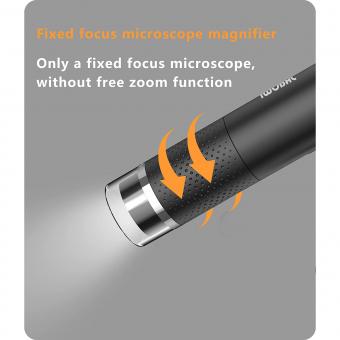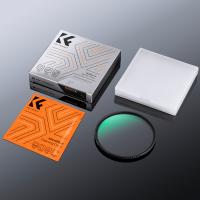What Are Microscopic Fungi ?
Microscopic fungi, also known as microfungi, are a diverse group of fungi that are too small to be seen with the naked eye. They belong to the kingdom Fungi and are characterized by their filamentous structures called hyphae. Microscopic fungi include various types such as yeasts, molds, and mildews. They play important roles in various ecosystems as decomposers, pathogens, and symbionts. Some microscopic fungi are also used in biotechnological applications, such as the production of food and beverages, antibiotics, and enzymes.
1、 Classification and taxonomy of microscopic fungi
Microscopic fungi, also known as microfungi, are a diverse group of fungi that are characterized by their small size and microscopic structures. They are found in various habitats, including soil, water, and decaying organic matter. Microscopic fungi play crucial roles in nutrient cycling, decomposition, and symbiotic relationships with plants and animals.
Classification and taxonomy of microscopic fungi have evolved over time as our understanding of their diversity and relationships has improved. Traditionally, microscopic fungi were classified based on their morphological characteristics, such as the shape and arrangement of their spores and hyphae. However, with the advent of molecular techniques, the classification of microscopic fungi has become more accurate and reliable.
The latest point of view in the classification and taxonomy of microscopic fungi is based on molecular phylogenetics, which involves analyzing the DNA sequences of different fungal species. This approach has revealed previously unknown relationships and has led to the reclassification of many fungal groups. For example, the phylum Zygomycota has been redefined, and some of its members have been moved to other phyla based on molecular evidence.
Furthermore, the use of molecular techniques has also allowed for the discovery of new fungal lineages and the identification of cryptic species that were previously unrecognized. This has greatly expanded our knowledge of the diversity of microscopic fungi and has highlighted the need for further research in this field.
In conclusion, microscopic fungi are a diverse group of fungi that play important ecological roles. The classification and taxonomy of these fungi have advanced with the use of molecular techniques, leading to a better understanding of their relationships and diversity. The latest point of view in this field is based on molecular phylogenetics, which has allowed for the reclassification of fungal groups and the discovery of new lineages. However, further research is still needed to fully explore the diversity and ecological significance of microscopic fungi.
2、 Morphology and structure of microscopic fungi
Microscopic fungi, also known as molds or filamentous fungi, are a diverse group of organisms that belong to the kingdom Fungi. They are called microscopic fungi because their individual structures are too small to be seen with the naked eye. These fungi are ubiquitous in nature and can be found in various environments such as soil, water, and air.
The morphology and structure of microscopic fungi are characterized by their filamentous growth form. They consist of long, branching filaments called hyphae, which collectively form a network known as mycelium. The hyphae are typically composed of a tubular cell wall made of chitin, a complex carbohydrate. This cell wall provides rigidity and support to the fungal structure.
Microscopic fungi reproduce through the production of spores, which are tiny reproductive structures that can be dispersed through the air or water. These spores can germinate and give rise to new hyphae, allowing the fungus to spread and colonize new areas.
Recent research has shed light on the molecular mechanisms underlying the morphology and structure of microscopic fungi. Advances in genetic and molecular techniques have revealed the presence of a wide range of genes involved in hyphal growth, branching, and cell wall synthesis. Additionally, studies have shown that environmental factors such as nutrient availability, temperature, and pH can influence the morphology and growth patterns of these fungi.
Understanding the morphology and structure of microscopic fungi is crucial for various fields, including agriculture, medicine, and biotechnology. These fungi can cause plant diseases, food spoilage, and human infections. On the other hand, they also play important roles in nutrient cycling, decomposition, and the production of valuable compounds such as antibiotics and enzymes.
In conclusion, microscopic fungi are a diverse group of filamentous organisms with a complex morphology and structure. Ongoing research continues to uncover the intricate molecular mechanisms underlying their growth and development, providing valuable insights into their ecological and biotechnological significance.
3、 Reproduction and life cycle of microscopic fungi
Microscopic fungi, also known as microfungi or filamentous fungi, are a diverse group of organisms that belong to the kingdom Fungi. They are called microscopic fungi because their individual structures, such as hyphae and spores, are too small to be seen with the naked eye. These fungi play a crucial role in various ecosystems as decomposers, pathogens, and symbionts.
The reproduction and life cycle of microscopic fungi involve both sexual and asexual modes of reproduction. Asexual reproduction occurs through the production of spores, which are small, lightweight structures that can be easily dispersed by wind, water, or other means. These spores can germinate and give rise to new fungal colonies under favorable conditions. Asexual reproduction allows for rapid colonization and spread of the fungi.
Sexual reproduction in microscopic fungi involves the fusion of two compatible hyphae from different individuals, resulting in the formation of a specialized structure called a fruiting body. Within the fruiting body, sexual spores called ascospores or basidiospores are produced. These spores are then released into the environment, where they can germinate and give rise to new fungal colonies.
Recent research has shed light on the complexity of the reproductive strategies of microscopic fungi. It has been discovered that some species can undergo both sexual and asexual reproduction, depending on environmental conditions. Additionally, studies have revealed the existence of cryptic species, which are morphologically similar but genetically distinct, highlighting the need for molecular techniques to accurately identify and classify these fungi.
Understanding the reproduction and life cycle of microscopic fungi is essential for various fields, including agriculture, medicine, and ecology. It allows us to better comprehend their ecological roles, pathogenic potential, and potential applications in biotechnology. Ongoing research continues to uncover new insights into the fascinating world of microscopic fungi and their intricate reproductive strategies.
4、 Ecological roles and interactions of microscopic fungi
Microscopic fungi, also known as microfungi or filamentous fungi, are a diverse group of organisms that are too small to be seen with the naked eye. They belong to the kingdom Fungi and play crucial ecological roles in various ecosystems.
Microscopic fungi are found in a wide range of habitats, including soil, water, plants, and animals. They are important decomposers, breaking down organic matter and recycling nutrients back into the ecosystem. This process is essential for nutrient cycling and maintaining the balance of ecosystems.
In addition to their role as decomposers, microscopic fungi also form mutualistic relationships with other organisms. For example, mycorrhizal fungi form symbiotic associations with the roots of plants, providing them with nutrients in exchange for carbohydrates. This mutualistic relationship enhances plant growth and helps plants adapt to different environmental conditions.
Microscopic fungi also have important interactions with other microorganisms. They can compete with bacteria for resources, influence the composition of microbial communities, and even produce antimicrobial compounds that inhibit the growth of other microorganisms. These interactions have significant implications for the overall functioning and stability of ecosystems.
Recent research has shed light on the vast diversity and ecological importance of microscopic fungi. Advances in DNA sequencing technologies have allowed scientists to uncover previously unknown fungal species and understand their ecological roles in greater detail. Furthermore, studies have shown that microscopic fungi play a crucial role in the degradation of pollutants and the bioremediation of contaminated environments.
Overall, microscopic fungi are essential components of ecosystems, contributing to nutrient cycling, plant growth, and microbial interactions. Understanding their ecological roles and interactions is crucial for managing and conserving ecosystems in the face of environmental challenges.



























There are no comments for this blog.